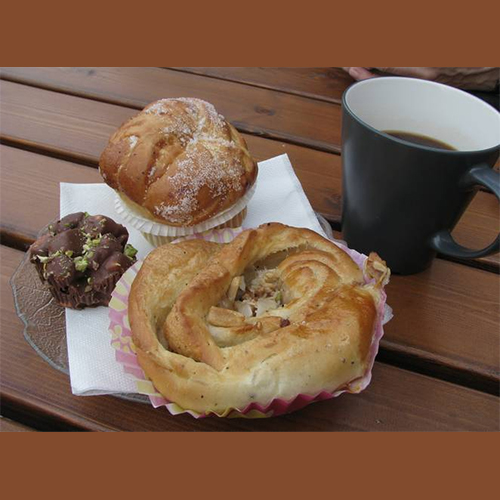 While the notion of a “coffee break” is certainly ingrained in American culture, we’ve found that the Swedes seem to be the true masters of the coffee break. Read about how a coffee break in Sweden entails more than a rushed dash to the closest break room or cafe:
While the notion of a “coffee break” is certainly ingrained in American culture, we’ve found that the Swedes seem to be the true masters of the coffee break. Read about how a coffee break in Sweden entails more than a rushed dash to the closest break room or cafe:
What does your coffee break look like? Is it grabbing a latte to go from a coffee shop? A muffin from a deli while running mid-work errands? Is it an office K-cup concoction consumed back at your desk? Do you work from home and numbly cruise social media while having tea? Do you even have a coffee break … and why does it matter, anyway?
Well it matters because many of us are too consumed by our fast-paced lives and we mindlessly shovel caffeine and sugar into our maws randomly throughout the day – and in doing so we miss out on some of the distinct pleasures that make life in this crazy world worth living.
Take it from the Swedes and the fine art of fika, the “slow” coffee break.
In Sweden, fika is more or less culturally mandated, writes Rachel Safko for Edible Manhattan. “It’s customary to bring homemade buns or jam thumbprint cookies to the office, use ceramic dishes and sit down with co-workers for awhile before heading back to work.”
It’s so much more than an opportunity to consume caffeine. It’s a moment to slow down and appreciate the good things in life. As explained in “Fika: The Art of the Swedish Coffee Break,” written by Anna Brones and Johanna Kindvall: “Functioning as both a verb and a noun, the concept of fika is simple. It is the moment that you take a break, often with a cup of coffee, but alternatively with tea, and find a baked good to pair with it. You can do it alone, you can do it with friends. You can do it at home, in a park or at work. But the essential thing is that you do it, that you make time to take a break: that’s what fika is all about.”
Coffee represents a true break, a moment to sit and contemplate on your own, or to gather with friends, says Brones. “In Sweden coffee is something to look forward to, a moment where everything else stops and you savor the moment. In today’s modern world we crave a little bit of that; we want an excuse to slow down.”
In Swedish offices there is a fika break both in the morning and the afternoon. It encourages people to remove their mind from work, if only for a few minutes, like taking an emotional power nap. It puts attention on eating something made with care rather than made with synthetic ingredients and excess packaging – and in doing so likely diminishes mindless snacking. It boosts face-to-face time and community and encourages real interaction. Maybe it’s the bane of introverts, but even introverts like a good cup of coffee and homemade cookies.
It also brings to mind Lloyd’s post on sister site MNN about the Norwegian architecture firm Snøhetta, who built their office around the lunch table (pictured above) – which serves as a hub for eating, socializing, and working. Lloyd writes, “There is much to love about this, and much to learn from it. Above all, meals should be healthy, and meals should be enjoyed. This is very different from the tech companies that have food available all the time to encourage employees to never leave their desks.” Right? It comes from the same line of thinking, that food provides nutrition for the body as well as the soul.
And fika isn’t reserved just for those with office jobs. It can be an excuse to meet friends at a bakery, it can be a gathering of people at home, it can be done seaside like in the photo below taken by the Vättern sea in Sweden.
It can be performed in an endless array of forms.
And for those of you smirking at the thought of baking thumbprint cookies at night to bring to the office in the morning; or for those who work physically demanding jobs with no coffee room in sight; or for anyone for whom all of this sounds completely impractical, I hear you. But fika doesn’t have to come with the warm rosy glow of healthy blondes and modern furniture and warm cardamom cookies – it’s more about a lifestyle and deciding to dedicate a small part of the day to slowing down and relishing the moment in whatever way you can.
As Brones and Kindvall write, “It’s not just because you bake a certain cake or serve a cup of coffee that you have fika. To truly fika requires a commitment to making time for a break in your day, the creation of a magical moment in the midst of the routine and mundane.”
And on that note, it’s time for coffee. Signing off for 20 minutes, cinnamon buns are waiting, be right back!
SRC: Find the original article here: www.treehugger.com/green-food/why-we-should-all-embrace-fika-swedish-coffee-break.html